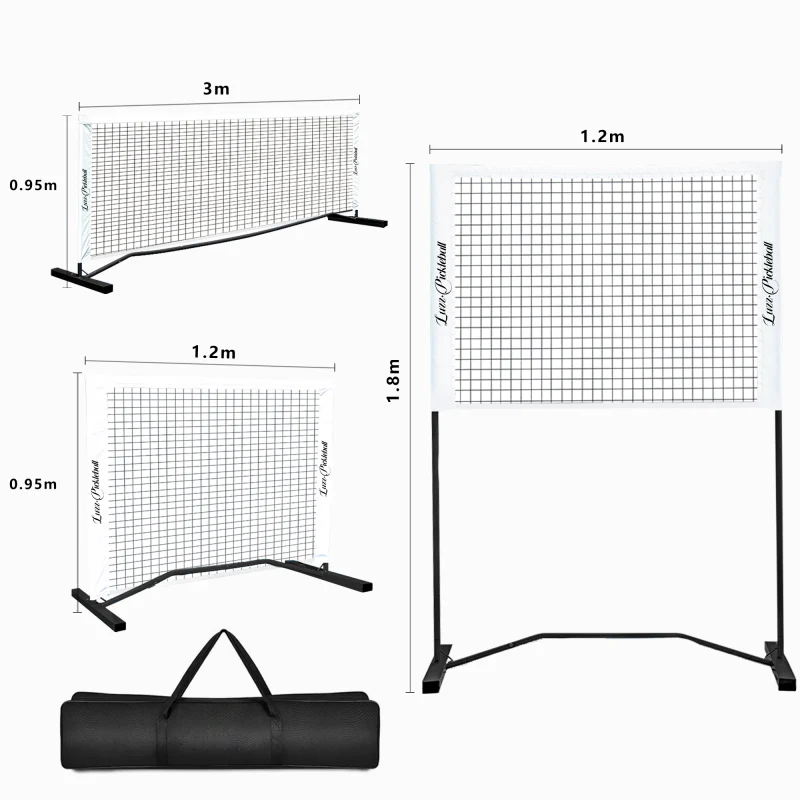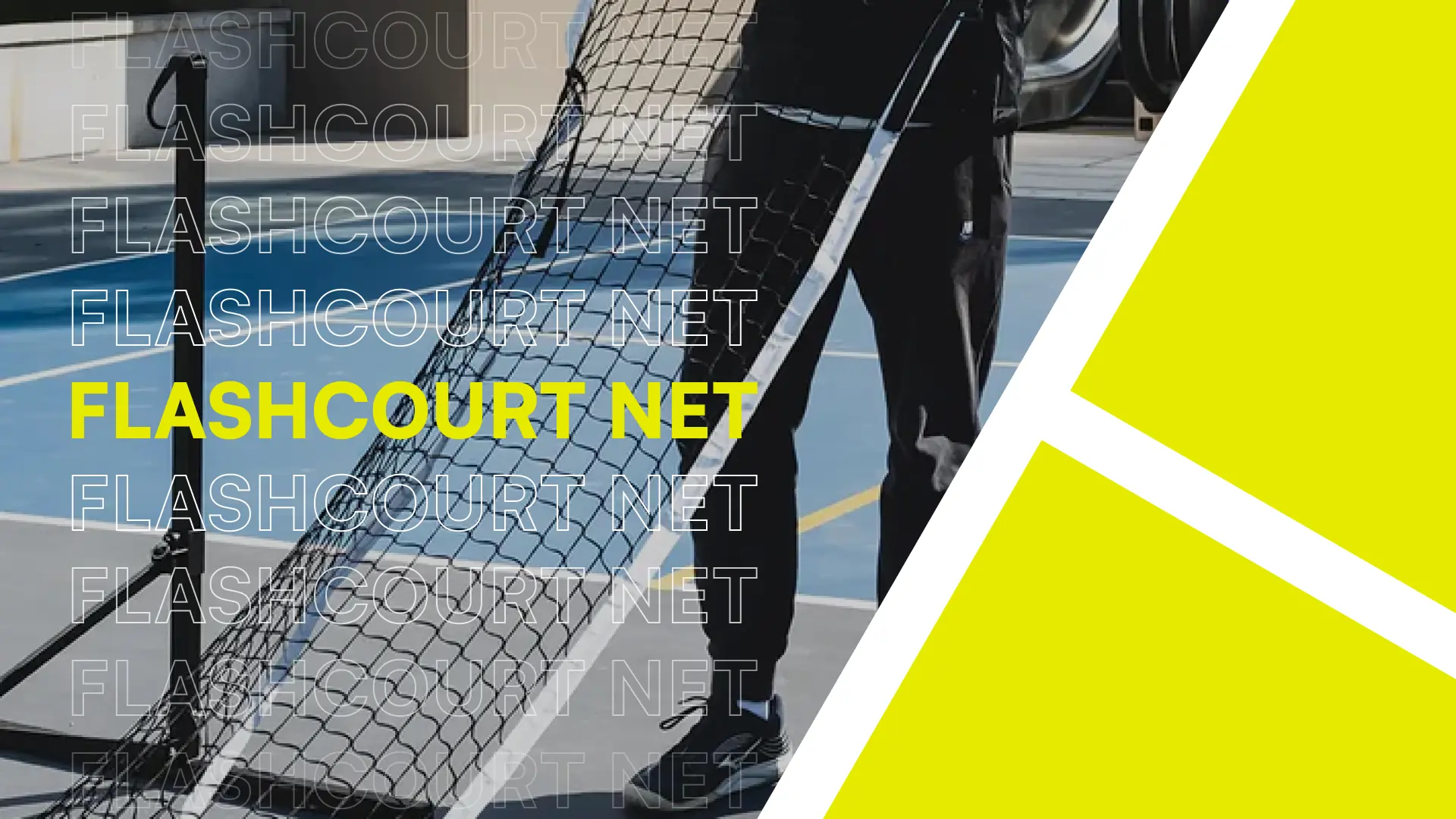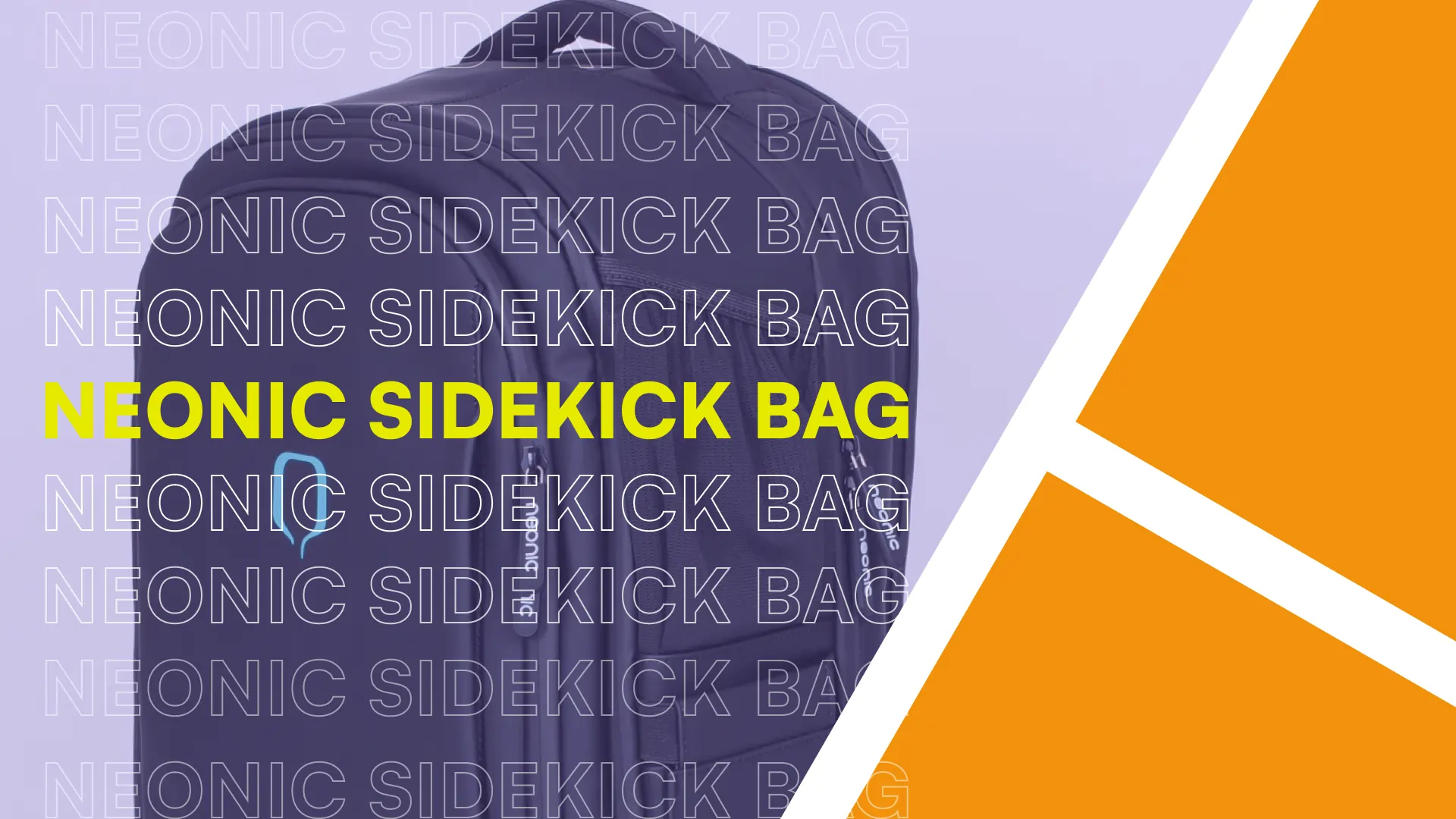Pickleball Doubles Rules [Scoring, Gameplay, & Strategies]

Pickleball doubles isn’t just about the game, it’s about the strategy, communication, and the bond you build with your partner. There’s something uniquely fun about teaming up, sharing the wins (and the misses), and laughing through long rallies and fast net exchanges. Playing doubles is a blast; but to get the most out of it, you’ve got to know the rules. This guide breaks down the official pickleball doubles rules—covering everything from scoring and gameplay to strategies and the gear you need.
At 11 PICKLES, we live and breathe pickleball! Whether you're here for the latest tips, breaking news, or gear that actually holds up on the court, you’ve found your people. We’re building a community that’s just like the game: fast, fun, and fiercely welcoming.
Rules of Pickleball Doubles
Let's start off with some good news—pickleball doubles and singles follow the same core rules, meaning it’s easy to transition between each style of play. Whether you’re flying solo or partnered up, the foundation of the game stays the same. So, if you’re new to the sport in general (or just need a quick refresher), be sure to brush up on our pickleball 101.
We’re going to cover some important pickleball rules that remain the same in doubles & singles play while highlighting what’s different about doubles. First, we'll talk about how serving works for doubles play.
Serving Rules in Pickleball Doubles
Every pickleball game kicks off with a serve—it’s the spark that lights up the rally. In doubles, it’s your team’s first shot to score and set the tone. Serving, rotating, and scoring isn’t just about following rules—it’s about syncing up and building momentum from the very first hit.
Which Team Serves First?
There’s no official ceremony for picking who serves first, so feel free to get creative. Make up your own house rules, flip a coin, or settle it with a quick round of rock-paper-scissors. You could even let the winner of the last game decide. Or, if you’re feeling nostalgic, let the team in the northwest corner go first—paying a little tribute to pickleball’s roots in the Pacific Northwest.
Doubles Server Rotation
Once the game’s rolling, the service follows a rhythm that (eventually) becomes second nature. It’s a two man rotation of serve, switch, serve, switch… miss. Pass the paddle to your partner. Miss again? Time to give the other team a shot at the spotlight. Here’s how it goes.
- The player on the right side of the court always serves first for their team.
- If that player wins the point, they switch sides (right to left) and keep serving.
- They’ll keep going—switching sides after each point—until they lose a rally.
- When they fault or lose the rally, it’s not a side out just yet. Their partner steps in and starts the service rhythm from wherever they’re standing.
- Once both players fault, it’s a side out, and the other team gets their turn at serving.
Hitting a Legal Serve (Volley vs. Drop)
There are no second chances on pickleball serves—no lets, no do-overs! So take a breath, line it up, and make it count when you serve.
The volley (hitting the ball out of the air) is the go-to serve for most players.
- Your paddle must move in an upward motion (forehand or backhand—your choice).
- You’ve got to make contact with the ball below your waist—navel height or lower.
- The paddle’s head must be below your wrist at the moment you hit the ball.
- The serve must go diagonally into your opponent’s service box.
- Keep at least one foot behind the baseline—no touching the baseline, centerline, or sideline when you serve.
The drop serve is great for beginners or anyone feeling the pressure. It’s more forgiving and helps you focus on consistency. A lot of newer players fall in love with it—and hey, it’s legal, effective, and totally legit.
- Just drop the ball (don’t toss it) and let it bounce.
- Hit it after the bounce, no paddle positioning rules required.
- Still, keep both feet behind the baseline when you hit it.
Opening Serve Twist
At the very start of the game, only one player on the serving team gets to serve. After that first rally, it’s game on as usual: both players on each team get a turn to serve before handing it over to the other side.
This is pickleball’s way of keeping things fair, since getting to serve first gives your team a slight advantage—the first crack at putting points on the board.
Wherever you and your doubles partner go, bring the court with you. The Luzz Portable Pickleball Net sets up in minutes and stays sturdy through long rallies. Perfect for driveways, gyms, or quick weekend games.
Use code 11PICKLES for 15% off your net today.
General Rules for Pickleball Doubles and Singles
These core rules apply to every game of pickleball. Whether you’re playing singles or doubles, you must understand these rules that keep the game fair, fun, and flowing.
Volleying & the Kitchen
Volleying is a key element of pickleball strategy, but it comes with rules, especially in the kitchen—the non-volley zone. The kitchen is a 7-foot rectangle on either side of the net, and if you’re hitting a volley (a shot before the ball bounces), you must avoid standing in or stepping on the kitchen line. Violating this rule results in a fault.
When you're near the kitchen, it’s all about dinking—hitting soft, controlled shots to make your opponent’s return awkward and force them into a mistake.
The Double Bounce Rule (Yes, It’s a Big Deal)
The Double Bounce Rule might sound simple, but it’s a total game-changer. After the serve, the receiving team has to let the ball bounce before hitting it back. Then the serving team has to do the same. Only after those two bounces can the volley party begin.
That’s why you’ll see players hang back a bit after the serve instead of charging the net—it’s not hesitation, it’s strategy. Breaking this rule is one of the easiest ways to give away a point, so don’t skip the bounce!
6 Common Faults in Doubles and Singles
Nobody’s perfect—but in pickleball, certain slip-ups will cost you the point. These are called faults, and they’re the little rule-benders that stop play in its tracks. Here are the usual suspects to watch out for:
- Your serve lands outside the correct box (oops!).
- The ball sails out of bounds or crashes into the net.
- You volley before it’s bounced twice—patience, grasshopper.
- You step into the kitchen while volleying .
- The ball bounces twice before you get to it.
- You touch the net or step over the baseline while serving—stay in your lane!
Line Calls: What’s In, What’s Out
In casual play, line calls run on the honor system. Yep—it’s all about good vibes and fair play. If any part of the ball touches the line, it’s in. Simple as that.
But when it comes to serves, there’s one twist: if the ball clips the non-volley zone line (aka the kitchen line), it’s a fault. However, if it grazes the sideline or baseline of the correct service box? That’s a clean, legal serve.
Pickleball Doubles Scoring Rules
Pickleball doubles scoring can sound a little funky—especially when you hear someone call out “4-2-1” for the first time. You might be thinking, “What’s that third number?!” It may seem quirky at first, but once you get the hang of it, keeping score is smooth sailing.
Other than that mysterious third number, pickleball doubles scoring is just like singles scoring: games are played to 11 points, win by 2. Ready to rack up points like a pro? Here’s everything you need to know to keep score and play your best.
Side Out Scoring Format
Pickleball uses a side out scoring format in both singles and doubles play. This means that serving in pickleball is kind of like being up to bat in baseball. When your team is serving, you’re on offense. When you’re not, you’re playing defense, fighting to win the rally and get the serve back.
Side Out Scoring - Only the serving team can score points. If your team isn’t serving and you win the rally, you don’t earn a point—you just earn the right to serve next.
How to Call the Score in Pickleball Doubles
In doubles, the score has a rhythm: first the serving team’s score, then the receiving team’s score, and then the server number—either 1 or 2.
So if you hear “4-2-1” called, here’s what it means:
- The serving team has 4 points
- The receiving team has 2
- And Player 1 on the serving team is up to serve
- The game always kicks off at 0-0-2 highlighting the opening serve twist
One thing to note about doubles pickleball scoring—the game always kicks off at 0-0-2 highlighting the opening serve twist for the first serving team.
Pickleball Doubles Gameplay
Pickleball doubles amps up the game and makes things more social, shifting the spotlight from pure power to clever strategy. It’s all about teamwork, communication, and using the rules to your advantage, finding and exploiting your opponents’ weaknesses.
Doubles play thrives on consistency and smart execution, not just raw talent & agility. Master the strategy, and you’ll outsmart your opponents with precision and perfect timing.
Where to Stand and When to Move in Doubles Pickleball
In doubles pickleball, it’s not just about making great shots—it’s about moving as one. Think of you and your partner as a well-oiled machine, anticipating each other’s moves and getting into position before the serve. Ready to sync up? Here’s how to nail it:
Consider Your Pre-Serve Positioning
On the serving team? Stay calm and cool behind the baseline. No need to rush the net just yet—remember the Double Bounce Rule. The returning team has a little more flexibility: the receiver hangs back, eyes peeled for a deep serve, while their partner stakes out the kitchen line, ready for action.
Hit, Hustle, and Hold the Line
Once that serve is returned, it’s go time. The receiver should immediately dash to the kitchen line to join their partner—this is the power spot. The serving team isn’t slacking either, but timing is everything. Wait for your third shot (maybe a sneaky drop), then make your move.
Mid-court is the danger zone, so don’t get caught there! Stay low, reset, and get to the net as quickly as you can. Once both players are at the kitchen line, you’ve officially got control.
Move Like You’re Tethered
Think of your movement as synchronized. If your partner moves to chase a shot, you cover the middle. If they charge the net, you follow suit. The goal is to leave no gaps, no open spaces—and definitely no easy points for your opponents.
Great teams don’t just play together; they move together. Master the footwork, read your partner’s body language, and keep that invisible connection strong. For a pro-level example, study up on the movement of Ben Johns & Gabe Tardio in doubles pickleball.
Differences in Pickleball Singles and Doubles
Singles pickleball is like running a marathon on a tennis court—you're on your own, covering every inch of the space. It’s all about speed, power, and precision. But doubles? That’s a whole different ball game. With the court divided, you’re running less but setting up clever shots and owning the non-volley zone.
While singles can be a physically demanding workout, doubles still gives you a great burn—just with less wear and tear on your body. If you’re looking for a bit more pace but less strain, doubles is the sweet spot.
Doubles pickleball is all about connection two players moving, communicating, and adapting as one. The Luzz Portable Pickleball Net makes it easy to bring that teamwork anywhere. It sets up in minutes, fits driveways or gyms, and gives you the real-court feel you need to practice positioning and coordination with your partner.
Use code 11PICKLES for 15% off your setup.
5 Strategies to Improve Pickleball Doubles Gameplay
Here are 5 game-changing strategies for doubles pickleball to keep your team in control:
- Take the Kitchen Line: The kitchen is where the action is in pickleball. After the serve return, charge the line with your partner to take control. Stay back, and you give your opponents the advantage.
- Master the Third Shot Drop: A well-placed third shot drop into the kitchen slows the game and lets you advance, forcing your opponents to return high and giving you the chance to take control.
- Communicate Clearly: Clear communication is key to a strong team. Call your shots, use hand signals, and stay in sync. When you’re connected, the points will flow.
- Target Their Feet: Hitting low shots at your opponent’s feet forces awkward returns and weak pop-ups, setting you up for easy put-aways. Keep them scrambling, and the point is yours.
- Use Stacking to Your Advantage: Stacking lets you and your partner align for better coverage and control, throwing off your opponent’s rhythm. Stay a step ahead by keeping them guessing.
Pickleball Doubles Equipment & Gear
Pickleball doubles doesn’t require any special type of equipment when compared with singles play. You will need paddles, balls, and you may need your own net if there isn’t a permanent set up at your local court.
Once you’ve got the basics down of pickleball doubles, it’s all about having fun. And a great way to show team spirit is with matching equipment and gear for doubles play. We’ve put together some of our favorite equipment, gear, & apparel options for doubles players.
Fun Pickleball Attire for the Court
If you are looking to create your own custom pickleball shirts, we’ve already created a guide that will walk you through putting together uniforms for your doubles teams. To make it easy for you, we’ve listened to the community and created our own lineup of fun shirts to wear out on the court. We’ve got something for every type of pickleball player.
- Self-Proclaimed Pickleball Legends
- Zen Minded Players that Don’t Overdink It
- Day Dinkers that like to Party and Pickleball
- Pickleball Dads–Dad Bod Not Included
- Fierce Pickleball Girlys
- Bros Who Pickle
We also have hats to show off your local pride and complete your look with our city-themed designs. Whether you’re playing in the heat of Las Vegas, the wind of Chicago, or traveling to the next big tournament in sunny Los Angeles, these hats keep you cool while making a bold statement. Adjustable and built for all-day wear, they’re the perfect way to top off your pickleball look.
https://www.11pickles.com/product/new-york-city-pickleball-club-hat
Best Pickleball Paddle Bundles for Doubles Play
With a pickleball set, you can be proactive about inviting friends to play doubles or always be ready when someone needs an extra paddle. These sets are great for beginners, as they come with everything you need to start playing—with a bundle of 2-4 paddles & about 4 pickleballs. These are some very affordable options.
Portable Pickleball Nets
It’s not always the case that you need a net to play, but these come in handy when you know of a great hard surface that lacks a proper permanent net. You can also buy your own court markers to make a pickleball court anywhere.
Portable Nets: Save the day by getting one of these portable nets as a present!
Court Marking Kits: An at home pickleball court isn’t complete without a proper boundary marker kit.
No court? No problem. The Luzz Portable Pickleball Net lets you turn any space into your home court—quick setup, steady frame, all play. Keep your doubles rhythm alive anywhere.
Use code 11PICKLES for 15% off your setup.
Your Doubles Partner in All Things Pickleball
At 11 PICKLES, we’ve got your back on all things pickleball—tips, gear, and game-ready strategies to help you play smarter and have more fun. Sure, winning feels great, but we’re all about the joy of the game (and yeah, a little competitive fire never hurts). Want to stay sharp? Sign up for our newsletter, check out our shop, and stay tuned for fresh takes and court-tested advice.
Let’s get real: pickleball gear isn’t free, and neither is running this site. That’s why some links here are affiliate links. If you buy through them, we earn a small commission—kind of like a little fist bump for helping you find awesome gear. It doesn’t cost you extra, but it keeps us in the game. Thanks for the assist!








